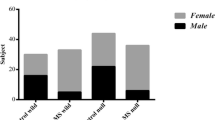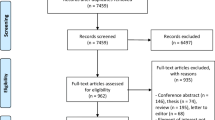Abstract
Sharp increase in multiple sclerosis (MS) incidence rate has been observed in Iranian people. In addition, it has been suggested that increased S100B level may be useful as an indicative factor of blood-brain barrier disruption. The propose of this study was to measuring blood arsenic, lead, and cadmium concentration and serum S100B concentration in a group of healthy and multiple sclerosis patients in Tehran as the most polluted city in Iran. All subjects were interviewed regarding age, medical history, possible chemical exposure, acute or chronic diseases, smoking, and dietary habits. Blood heavy metal level was measured by an atomic absorption spectrometer (Varian model 220-Z) conjugated with a graphite furnace atomizer (GTA-110). Also, a serum S100B protein concentration was determined using a commercial ELISA kit. It was observed that all male subjects had higher blood metal level in comparison with healthy controls. Also, MS patients had higher arsenic and cadmium blood concentration in comparison with healthy individuals. Regarding the S100B concentration, it was observed that it had a significant relationship with smoking habit (P value = 0.0001). In addition, arsenic had a greater correlation (63%) with increased serum S100B biomarker level among other elements. BBB leakage was higher in multiple sclerosis than in healthy subjects due to increased S100B release. In addition with regard to the heavy metal exposure especially arsenic and cadmium, these are associated with an increased BBB disruption and it is possible to play a crucial role as a developing agent of multiple sclerosis.


Similar content being viewed by others
References
Compston A, Coles A (2008) Multiple sclerosis. Lancet 372(9648):1502–1517. https://doi.org/10.1016/S0140-6736(08)61620-7
Nicoletti A, Messina S, Bruno E, Mostile G, Quattrocchi G, Raciti L, Dibilio V, Cappellani R, D’Amico E, Sciacca G (2016) Risk factors in multiple sclerosis: a population-based case–control study in Sicily. Background and methods. Neurol Sci 37(12):1931–1937
Farzin L, Amiri M, Shams H, Faghih MAA, Moassesi ME (2008) Blood levels of lead, cadmium, and mercury in residents of Tehran. Biol Trace Elem Res 123(1–3):14–26
Bian B, Zhou LJ, Li L, Li L, Fan YM (2015) Risk assessment of heavy metals in air, water, vegetables, grains, and related soils irrigated with biogas slurry in Taihu Basin, China. Environ Sci Pollut Res 22(10):7794–7807
Etemadifar M, Mehrabi B, Kiani-Peykani R, Abtahi SH, Nekouie-Isfahani K, Ramagopalan S, Fereidan-Esfahani M (2016) Soil heavy metals are associated with the distribution of multiple sclerosis in Isfahan, Iran. Acta Neurol Scand 134(4):292–299
González-Estecha M, Trasobares E, Fuentes M, Martínez MJ, Cano S, Vergara N, Gaspar MJ, González-Revaldería J, Barciela MC, Bugarín Z (2011) Blood lead and cadmium levels in a six hospital employee population. PESA study, 2009. J Trace Elem Med Biol 25:S22–S29
Attia AM, Ibrahim FA, EL-Latif NAA, Aziz SW (2014) Antioxidant effects of curcumin against cadmium chloride-induced oxidative stress in the blood of rats. J Pharmacogn Phytother 6(3):33–40
Patrick L (2006) Lead toxicity part II: the role of free radical damage and the use of antioxidants in the pathology and treatment of lead toxicity. Altern Med Rev 11(2):114–127
Steinacker P, Weidehaas K, Cepek L, Feneberg E, Kretzschmar H, Otto M (2013) Influence of the blood-CSF-barrier function on S100B in neurodegenerative diseases. Acta Neurol Scand 128(4):249–256
Wiesmann M, Steinmeier E, Magerkurth O, Linn J, Gottmann D, Missler U (2010) Outcome prediction in traumatic brain injury: comparison of neurological status, CT findings, and blood levels of S100B and GFAP. Acta Neurol Scand 121(3):178–185
Bartosik-Psujek H, Psujek M, Jaworski J, Stelmasiak Z (2011) Total tau and S100b proteins in different types of multiple sclerosis and during immunosuppressive treatment with mitoxantrone. Acta Neurol Scand 123(4):252–256
Koh SX, Lee JK (2014) S100B as a marker for brain damage and blood–brain barrier disruption following exercise. Sports Med 44(3):369–385
Polman CH, Reingold SC, Banwell B, Clanet M, Cohen JA, Filippi M, Fujihara K, Havrdova E, Hutchinson M, Kappos L (2011) Diagnostic criteria for multiple sclerosis: 2010 revisions to the McDonald criteria. Ann Neurol 69(2):292–302
Saeedi M, Li LY, Salmanzadeh M (2012) Heavy metals and polycyclic aromatic hydrocarbons: pollution and ecological risk assessment in street dust of Tehran. J Hazard Mater 227:9–17
Satarug S, Garrett SH, Sens MA, Sens DA (2011) Cadmium, environmental exposure, and health outcomes. Environ Health Perspect 118(2):182–190
Unsal C, Kanter M, Aktas C, Erboga M (2015) Role of quercetin in cadmium-induced oxidative stress, neuronal damage, and apoptosis in rats. Toxicol Ind Health 31(12):1106–1115
Heydarpour P, Amini H, Khoshkish S, Seidkhani H, Sahraian MA, Yunesian M (2014) Potential impact of air pollution on multiple sclerosis in Tehran, Iran. Neuroepidemiology 43(3–4):233–238
Heydarpour P, Manouchehrinia A, Beiki O, Mousavi S, Abdolalizadeh A, Lakeh MM, Sahraian M (2018) Smoking and worsening disability in multiple sclerosis: a meta-analysis. Acta Neurol Scand 138:62–69
Prasad S, Sajja RK, Park JH, Naik P, Kaisar MA, Cucullo L (2015) Impact of cigarette smoke extract and hyperglycemic conditions on blood–brain barrier endothelial cells. Fluids Barriers CNS 12(1):18
Aliomrani M, Sahraian MA, Shirkhanloo H, Sharifzadeh M, Khoshayand MR, Ghahremani MH (2016) Blood concentrations of cadmium and lead in multiple sclerosis patients from Iran. Iran J Pharm Res 15(4):825–833
Aliomrani M, Sahraian MA, Shirkhanloo H, Sharifzadeh M, Khoshayand MR, Ghahremani MH (2017) Correlation between heavy metal exposure and GSTM1 polymorphism in Iranian multiple sclerosis patients. Neurol Sci 38(7):1271–1278
Kushwaha R, Mishra J, Tripathi S, Khare P, Bandyopadhyay S (2018) Arsenic, cadmium, and lead like troglitazone trigger PPARγ-dependent poly (ADP-ribose) polymerase expression and subsequent apoptosis in rat brain astrocytes. Mol Neurobiol 55(3):2125–2149
Tanaka Y, Koizumi C, Marumo T, Omura T, Yoshida S (2007) Serum S100B indicates brain edema formation and predicts long-term neurological outcomes in rat transient middle cerebral artery occlusion model. Brain Res 1137:140–145
Prakash C, Soni M, Kumar V (2016) Mitochondrial oxidative stress and dysfunction in arsenic neurotoxicity: a review. J Appl Toxicol 36(2):179–188
Golmohammadi J, Jahanian-Najafabadi A, Aliomrani M (2018) Chronic Oral Arsenic Exposure and Its Correlation with Serum S100B Concentration. Biol Trace Elem Res 1–8. https://doi.org/10.1007/s12011-018-1463-2
Kushwaha R, Mishra J, Tripathi S, Khare P, Bandyopadhyay S (2018) Arsenic, Cadmium, and Lead Like Troglitazone Trigger PPARγ-Dependent Poly (ADP-Ribose) Polymerase Expression and Subsequent Apoptosis in Rat Brain Astrocytes. Mol Neurobiol 55(3):2125–2149
Acknowledgments
The authors wish to thank the multiple sclerosis patients for their kindness and voluntary participation in this study. This study was supported by a grant (Project No. 141-2939) from Vice Chancellor for Research, AJA University of Medical Sciences, Tehran, Iran.
Author information
Authors and Affiliations
Corresponding author
Ethics declarations
Conflict of Interest
The authors declare that they have no conflict of interest.
Rights and permissions
About this article
Cite this article
Paknejad, B., Shirkhanloo, H. & Aliomrani, M. Is There Any Relevance Between Serum Heavy Metal Concentration and BBB Leakage in Multiple Sclerosis Patients?. Biol Trace Elem Res 190, 289–294 (2019). https://doi.org/10.1007/s12011-018-1553-1
Received:
Accepted:
Published:
Issue Date:
DOI: https://doi.org/10.1007/s12011-018-1553-1




